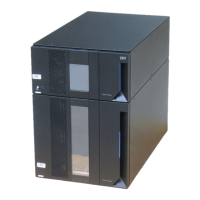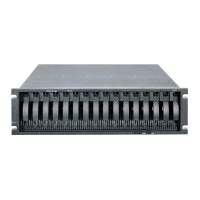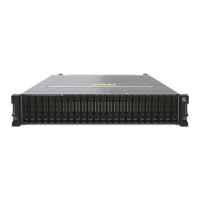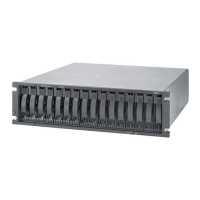58 IBM Flex System V7000 Storage Node Introduction and Implementation Guide
When a host server performs I/O to one of its volumes, all the I/Os for a specific volume are
directed to the owning I/O group. Also, under normal conditions, the I/Os for that specific
volume are always processed by the same canister within the I/O group.
Both canisters of the I/O group act as preferred nodes for their own specific subset of the total
number of volumes that the I/O group presents to the host servers (a maximum of 2048
volumes). However, both canisters also act as the failover canister for its partner within the I/O
group, so a canister can take over the I/O workload from its partner, if required.
In an IBM Flex System V7000 Storage Node environment, using active-active architecture,
the I/O handling for a volume can be managed by both canisters of the I/O group. Therefore, it
is mandatory for servers that are connected through Fibre Channel connectors to use
multipath device drivers to be able to handle this capability.
The I/O groups are connected to the SAN so that all application servers accessing volumes
from the I/O group have access to them. Up to 512 host server objects can be defined in two
I/O groups.
2.5.4 Clustered system
A clustered system consists of one to four control enclosures. All configuration, monitoring,
and service tasks are performed at the system level and the configuration settings are
replicated across all control canisters in the clustered system. To facilitate these tasks, one or
two management IP addresses are set for the system.
There is a process provided to back up the system configuration data on to disk so that the
clustered system can be restored in the event of a disaster. This method does not back up
application data, only the IBM Flex System V7000 Storage Node configuration information.
For the purposes of remote data mirroring, two or more clustered systems (IBM Flex System
V7000 Storage Nodes, Storwize V7000, or SAN Volume Controller systems starting from
Version 6.4) must form a partnership before creating relationships between mirrored volumes.
As mentioned earlier, one canister is designated as the configuration node and it is the
canister that activates the system IP address. If the configuration node fails, the system
chooses a new canister as the configuration node and the new canister takes over the system
IP addresses.
Important: The active / active architecture provides ability to process I/Os for both control
canisters and allows the application to continue running smoothly, even if the server has
only one access route or path to the storage. This type of architecture eliminates the path /
LUN thrashing that can exist with an active / passive architecture.
System configuration backup: After backing up the system configuration, save the
backup data on your hard disk (or at the least outside of the SAN). When you are unable to
access the IBM Flex System V7000 Storage Node, you do not have access to the backup
data if it is on the SAN.
Important: With IBM Flex System V7000 Storage Node 6.4, the layer parameter can only
be changed by running chsystem using the CLI. The default is the storage layer, and you
must change it to replication if you need to set up a copy services relationship between
the IBM Flex System V7000 Storage Node with either the IBM Storwize V7000 or SAN
Volume Controller.
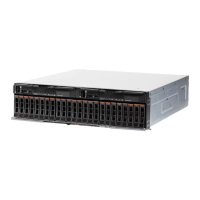
